The Visionaries: Kris Van Assche is bringing Berluti home
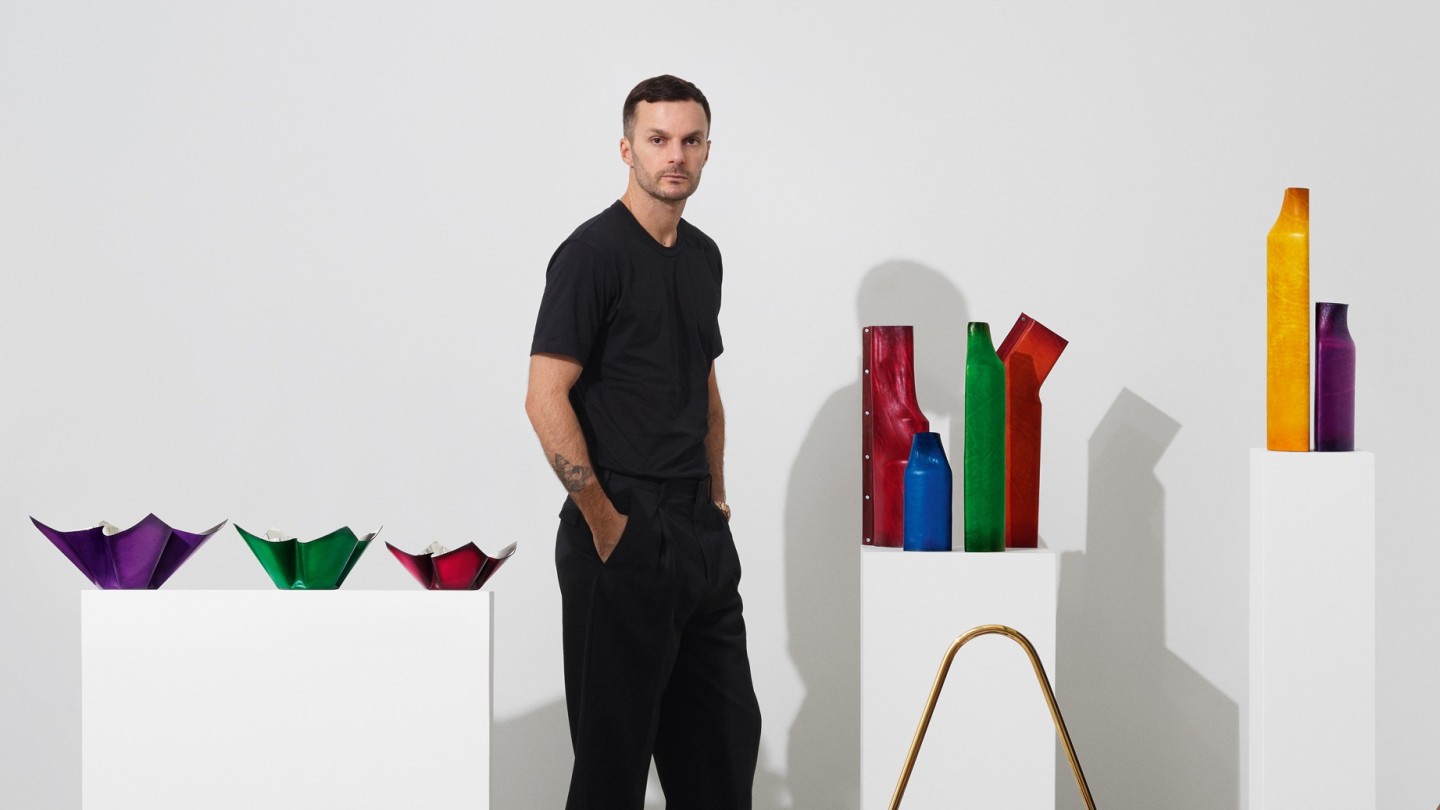
Roula Khalaf, Editor of the FT, selects her favourite stories in this weekly newsletter.
Interior design has always been the foundation of Kris Van Assche’s creative vision at Berluti. The starting point for the Belgian artistic director’s runway debut for autumn/winter 2019 was a table. He spotted the piece at the house’s workshop in Ferrara, Italy – a marble-topped workbench used by Berluti artisans to hand-colour the signature Venetian leather shoes in their distinctive aged patina. Not only did this innocuous hunk of furniture give rise to a painterly print on coats and shirting that mimics the smudges and stains on the square tabletop; it dictated the palette of the collection. In Van Assche’s mind, the table represents the craft that has been a hallmark of the brand since its inception by the Italian Alessandro Berluti in fin de siècle Paris.
“I’ve been on a double mission since starting here two years ago,” he says from a cavernous white studio space at the brand’s headquarters on Rue du Faubourg Saint-Honoré. “To push Berluti in a more fashion-forward direction – and to cultivate the craft and DNA of the brand.”
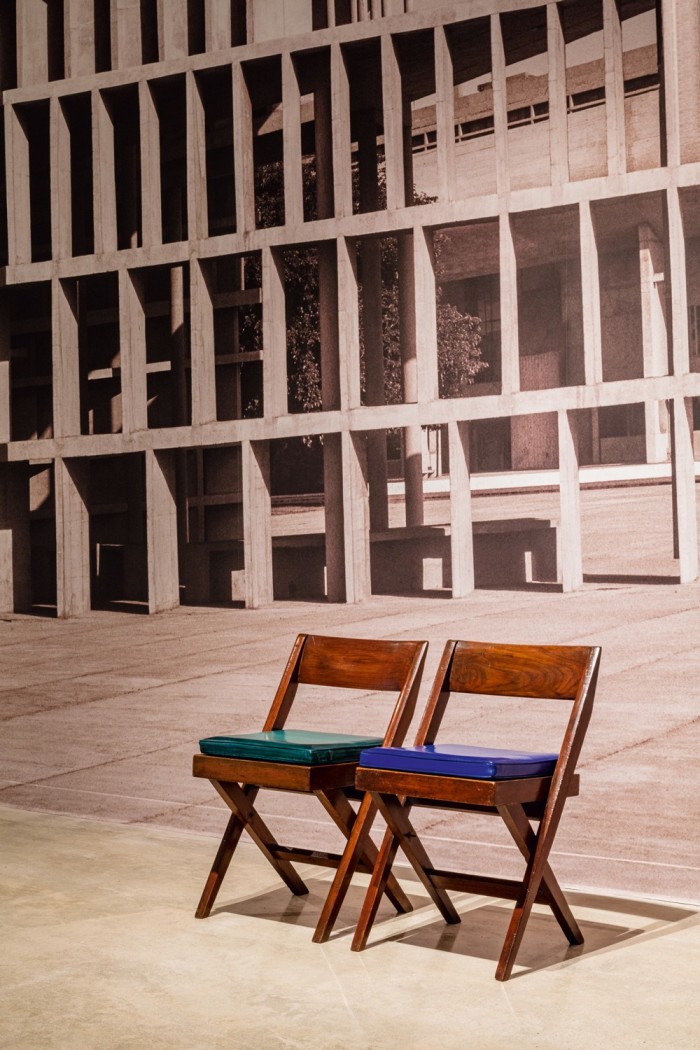
Teasing out that DNA has been more complicated than you might imagine. There is no extensive back catalogue of looks with which to retool the house codes. “The archive is the shoes,” he says. “So a lot of my work consists of making the pieces that were missing in the past.”
Van Assche’s latest move in that careful process is a small but sublimely executed line of decorative accessories. Through a close collaboration with a quartet of makers who work with wood, silver, brass and leather, he has taken Berluti’s patinas off the runway and into the home.
There are leather-lined silver bowls and boxes from San Lorenzo, the Milanese silver specialist whose work sits in the permanent collection at the V&A; ebony-edged maple-wood trays and picture frames from Bottega Ghianda, which has worked with everyone from Giò Ponti to Hermès, and whose eponymous founder was known as a “poet of wood”; a collection of five leather vases imagined by the British designer Simon Hasan; and a series of desk accessories including blotters, pen pots, magazine holders, letter openers and even a bin from the archive of the Austrian modernist artist Carl Auböck. With their distinctive ombre leathers and hand-stitched detailing, Auböck’s elegant trinkets are treated with the same care as the house’s signature Alessandro shoe. Never has a wastepaper basket looked so chic.
So what compelled the 43-year-old, who headed up Dior Homme for more than a decade before moving to Berluti, to make a move into homewares? “I’ve been using the patina leather in the ready-to-wear collection, and on other fashion accessories, so using it on home objects felt like the next logical step,” he explains.
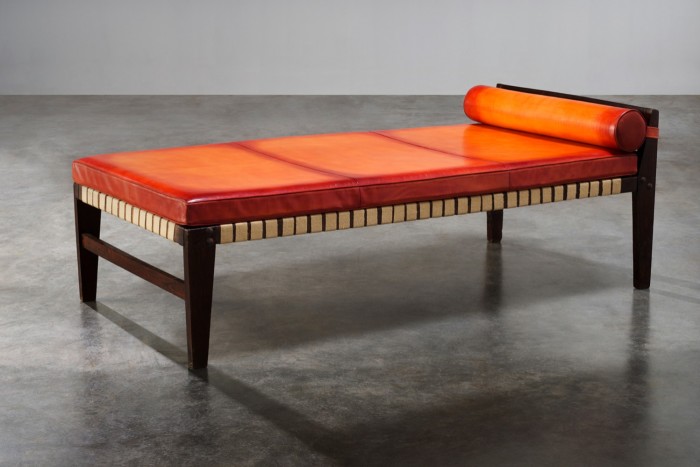
The art of Van Assche’s role here, as with everything he does at Berluti, lies in striking the balance between the past and the present – and melding traditional techniques with his original vision. Though the project began with Auböck’s classically modern objects, which feel as though they’ve been in the Berluti archive for years, it was important to expand the line to include contemporary designers and prevent things becoming too nostalgic.
“The collection feels like a fashion show,” says Van Assche. “Some of the pieces reflect the history of the brand and some the future, but all are treated in the same elevated way.” The process of finding the right collaborators was long and forensic. “All of them have a history of collaborating with amazing artists in the ’50s and ’60s, which is why we chose them. It’s a very high-end vision – the antithesis of streetwear collaborations.”
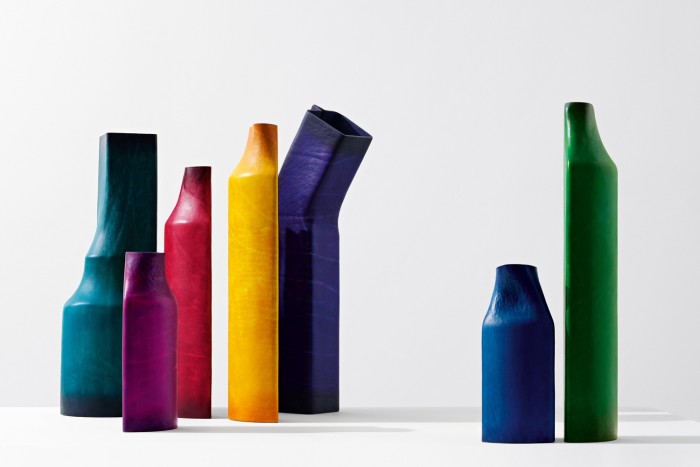
Van Assche was particularly taken with the work of Simon Hasan, whose use of cuir bouilli (boiled leather), a material that can be traced back to medieval armour making, resonated with Berluti’s own craft techniques. “There’s something very similar in his approach to things,” Van Assche says, referring to the way the wooden last is used to mould the shape of the shoe. “The results are very different. But when Simon went to our workshop, he was amazed at the similarities between the techniques.”
It took endless testing to achieve the bright hues of Hasan’s strong and simple vases – the only objects in the line not to be wrought from Berluti’s Venetian leather. But the finished vessels, Van Assche says, will sit perfectly with the ceramics from makers including Pol Chambost and Kristin McKirdy already on display at his home.
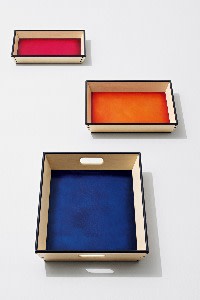
“There’s definitely a bit of selfishness in creating these objects,” he admits. “I would imagine myself going to the store to buy gifts for myself, my family and my friends. It’s like my own spontaneous shopping list.”
Likewise, the San Lorenzo bowls are silver hallmarked on the inside in a very traditional way, but double-layered with Berluti leather in delicious greens, purples and reds. Their rich sheen resembles Quality Street wrappers.
“The colour of the leather works amazingly well with the silver,” says Van Assche of the designs. Originally conceived by Afra and Tobia Scarpa in 1996, they were the first objects to be wrought by the San Lorenzo workshop in pure silver – a serious technological feat in the world of silversmithing. Van Assche imagined gifting his partner these decorative jewels. Meanwhile, the puzzle-like joinery of the Bottega Ghianda picture frames was inspired by the family photographs arranged on the desk of Berluti’s CEO Antoine Arnault (he knows what to expect for Christmas!)
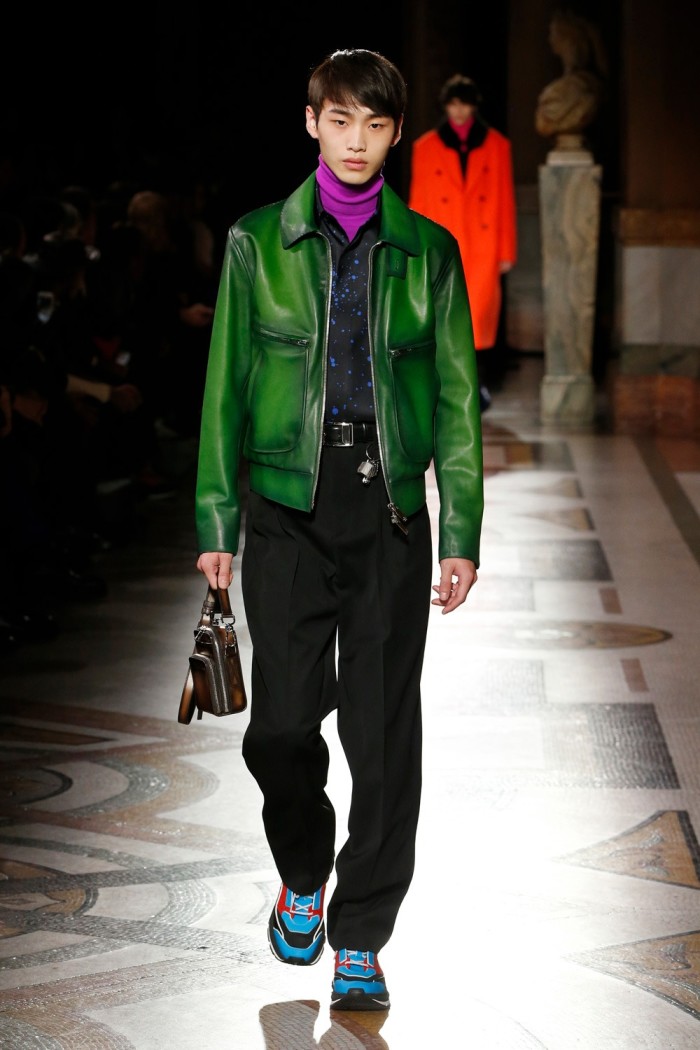
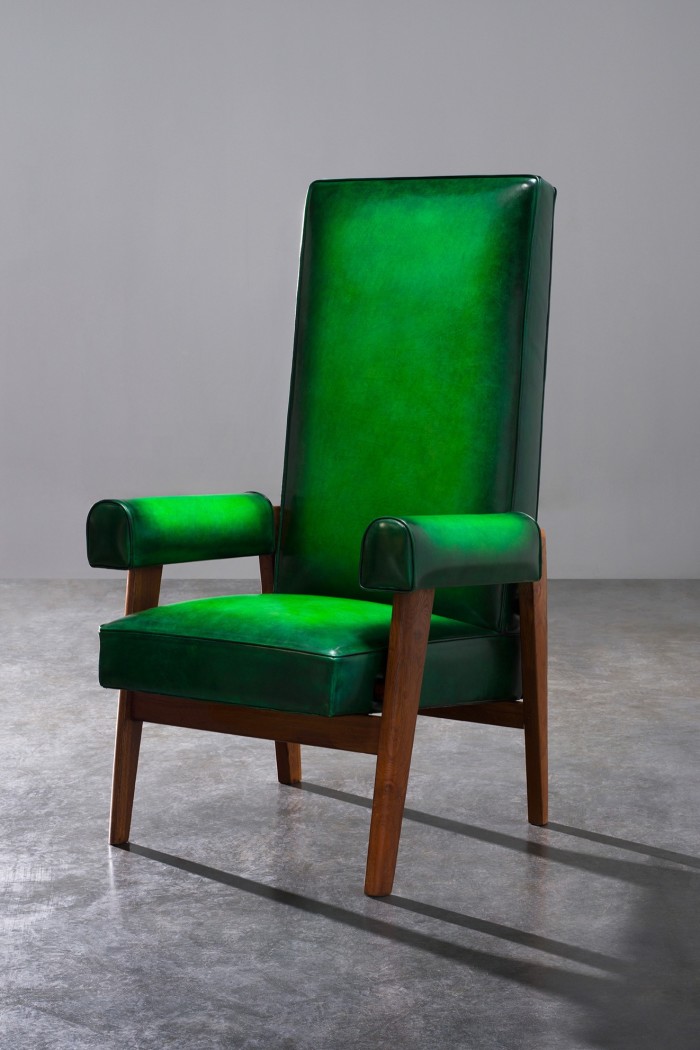
It’s not the first time Van Assche has dabbled in interiors. Last December, at Art Basel Miami Beach, he presented a capsule of restored midcentury furniture by the modernist Swiss architect Pierre Jeanneret, upholstering chairs, tables, screens, benches and desks in bright Berluti leathers. All 17 pieces came from the collection of François Laffanour of Galerie Downtown in Paris – a long-time friend of the designer. It was from Laffanour that Van Assche bought his first pieces of Jeanneret furniture, and the pair of cinema chairs now sit in a living room almost filled with his creations. “There’s something very architectural about Jeanneret,” he says. “Every piece is handmade – it’s no-nonsense and graphic.”
For Van Assche, these extracurricular projects have been the key to unlocking his new approach to colour, a seismic shift in attitude for a designer who still wears a uniform of black from head-to-toe.
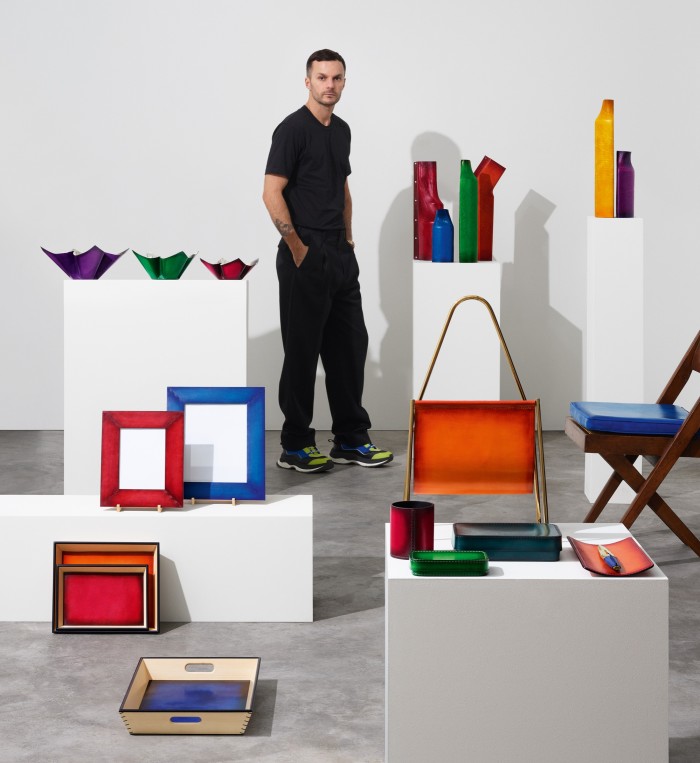
“I have always had a hard time imagining clothes in colour, but I find it far easier with furniture,” he says. “It has opened the door to colour for me, and allowed me to be freer.” He points to the verdant green of the San Lorenzo silver bowls, a colour that is mirrored by both the high-backed Judge chair from the interiors presented in Miami and a luxuriant men’s leather jacket from his autumn/winter 2020 show. “Pinjore Garden Green” is inspired by the lush topiary of the gardens at Chandigarh, which Van Assche recently visited.
It’s significant that Van Assche’s role in the creation of Berluti’s decorative objects has been that of curator rather than originator. “I didn’t design these objects,” he says. “I simply gave them a new lease of life by seeing how they work with the Berluti leather, colour treatments and patinas. The fact that they’re so beautiful shows how beautifully they’ve been designed.” It’s a creative journey that’s been marked, more than anything, by pleasure. “I’m the first to be surprised by how much fun I’ve had working on this,” he admits. “It’s part of this whole new Berluti adventure.”
Comments